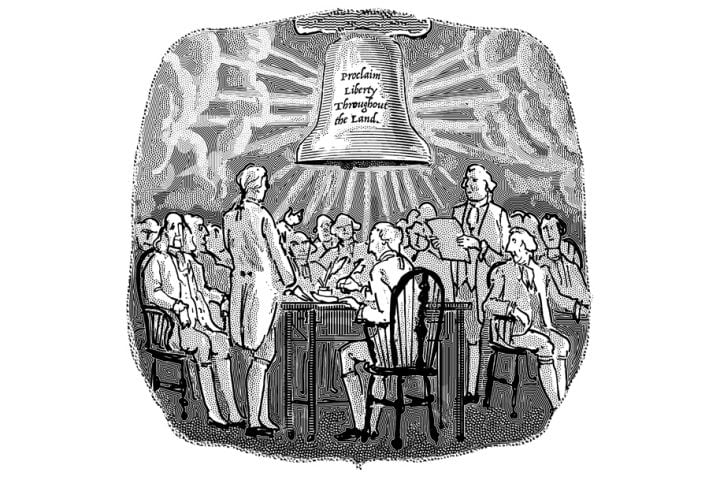“Diversity and inclusion” is the moral benchmark of our time, “social justice” distilled to its essence. Every corporation, college, and government agency, along with a growing number of bowling leagues and bait-and-tackle shops, has an Office of Diversity and Inclusion.
Many places that preach diversity and inclusion, however, do little to practice it. The website WalletHub has released its annual diversity rankings of American cities. Portland, Oregon, ends up as 270th out of 501 cities in terms of ethnic diversity, no surprise given that the 2010 census showed Portland’s population to be 76.1% white, 9.4% Hispanic, 7.1% Asian, and 6.3% black. Despite this demographic resemblance to the past’s more monochromatic America, the one Donald Trump is allegedly determined to restore, Multnomah County gave Trump only 17% of its votes in 2016. (Four-fifths of the county’s residents live in Portland.)
Even thorough, geographic intermingling of different ethnic groups doesn’t guarantee that diversity will be inclusive. Consider gentrification, wherein significant numbers of prosperous people move into and then change the character of city neighborhoods previously home to the urban poor. Although a global phenomenon, American gentrification usually entails white professionals transforming black neighborhoods.
In Race, Class, and Politics in the Cappuccino City (2017) sociologist Derek S. Hyra studied gentrification in Washington, D.C.’s Shaw neighborhood. Because of Washington’s affordable housing policies, including rent control and subsidized housing, gentrification there does not, to the extent common in other cities, price people out of the neighborhoods where they grew up. In that sense, gentrification in D.C. should have as good a chance to go smoothly as could be hoped for.
What Hyra found instead of social integration, however, was “micro segregation” or “diversity segregation.” The Shaw he describes is two sociological neighborhoods simultaneously occupying a single geographic one. White millennials and black residents “interact little and frequently chafe with each other,” in the Washington Post’s summary of Hyra’s argument.
Pressure from new residents, for example, prevented the Metropolitan Baptist Church, founded by former slaves in 1864, from using a nearby public-school playground as a parking lot on Sunday mornings. (They regarded the long-standing practice as violating the separation of church and state.) When some worshippers then double-parked on the street during church services, a common practice in many black neighborhoods, Shaw’s newcomers were “furious,” Hyra says, and demanded that police ticket those cars. Little wonder that despite the District’s affordable housing policies, Shaw went from being 90% black in 1970 to 30% in 2010. “Our new neighbors” proved unwilling to “collaborate, cooperate, or even converse,” said Metropolitan’s pastor. After 150 years in Shaw, Metropolitan Baptist has relocated to Maryland.
A big reason gentrifiers move into cities, Hyra writes, is that they “crave a variety of ‘authentic’ urban experiences.” Hyra describes the newest Shaw residents as “tourists in place” who want things both ways: expensive restaurants and condominiums, but also the “drama of living on the edge."
* * *
We may safely assume that Shaw’s gentrifiers not only don’t consider themselves racists, but take pride in the enlightened views that set them apart from the bigoted reactionaries who elected Trump. But politically, too, they want things both ways. The Urban Dictionary defines “passive progressives” as “pseudo-liberals,” holding all the right opinions and attitudes while reliably advancing their own interests.
Perhaps, however, the problem is not that Shaw’s newcomers are pseudo-liberals but that they’re…well, authentic liberals. In 1962, long before anyone worried about gentrification, James Baldwin lamented “the incredible, abysmal, and really cowardly obtuseness of white liberals,” as a result of which “they could deal with the Negro as a symbol or a victim but had no sense of him as a man.”
It is possible to feel both contempt and sympathy for today’s urban progressive. An article on gentrification in Philadelphia noted that white flight was supposed to have devastated big cities 50 years ago, just as gentrification is said to be ruining them now. “Where do we want the upper middle class people to live?” asked one recently arrived Philadelphian. “Anywhere?” It seems there can be guilt fatigue as well as compassion fatigue.
And, ultimately, the anti-gentrification argument culminates in sanctioning segregation. If black cultural and political power requires geographic cohesion, then any trend that disperses rather than concentrates black people becomes objectionable.
For all that, our diverse country will be more inclusive when white liberals start seeing members of minority groups as fellow Americans, not symbols (of authenticity) or victims (who can bestow redemption). In the 1985 comedy Lost in America, Albert Brooks implores his wife to quit their bourgeois lives for an endless motorhome tour: “We have to touch Indians.” Find out first, though, if they want to touch you.


